What is Financial Planning?
If you're unfamiliar with the term "financial planning," this simply refers to the combination of various components impacting your finances as a whole. While there are indeed many ways to break this down, this particular article zeroes in on the following seven components, specifically:
Short- and long-term goals
Insurance planning
Cash flow planning
Investment planning
Tax planning
Retirement planning
Estate planning
Let's explore each one of these in more detail…
1. Short- and long-term goals
The first component of financial planning is simply defining short-term and long-term goals with the goal of clarifying each. While short-term goals typically range from a few months to a few years—including objectives such as building an emergency fund, paying off credit card debt, or saving for a vacation—their long-term counterparts extend over several years (even decades!) and may include planning for retirement, purchasing a home, or funding a child’s education.
Let’s consider a hypothetical married couple in their early 30s, Mark and Sarah, and how defining various financial goals with different time horizons can influence their financial plan.
Their short-term goals include:
Building a six-month emergency fund (approximately $25,000)
Paying off $15,000 in student loans within three years
Saving $10,000 for a down payment on a new car
Their long-term goals include:
Purchasing a home within five years with a 20% down payment
Retiring comfortably at age 65
Funding their future children’s college education
To incorporate these goals into their financial plan, Mark and Sarah must first assess their current income, expenses, and savings rate: prioritizing short-term goals by setting up automatic transfers to a high-yield savings account for their emergency fund while making extra student loan payments. For their car purchase, meanwhile, they allocate a portion of their monthly budget to a dedicated savings account to avoid taking on additional debt.
Mark and Sarah also begin planning for long-term objectives, contributing to employer-sponsored retirement accounts—taking full advantage of any matching contributions—while likewise exploring investment options (e.g., IRAs and brokerage accounts) to build wealth over time. To prepare for homeownership, then, they dedicate a fixed amount each month to a down payment fund.
In balancing short- and long-term financial priorities, Mark and Sarah create a sustainable plan allowing them to meet immediate needs while steadily progressing toward their future goals. This structured approach, unique to each individual based on his/her objectives, helps support financial security in both the present and the years to come.
2. Insurance planning
No plan is perfect, which is why insurance exists. Proper insurance coverage can help ensure financial goals remain on track even in the face of emergencies such as illness, disability, or property damage. While specific types of necessary insurance vary, key examples include:
Health insurance
Life insurance
Disability insurance
Homeowners/renters insurance
Car insurance
Long-term care insurance
Let’s consider David and Lisa, a married couple in their late 30s with two young children. David works as an engineer, and Lisa is a freelance graphic designer. They recognize that while they're actively building wealth, an unexpected event could derail their financial progress at any time.
To ensure financial security, then, they take the following steps:
Health insurance: They maintain a family health insurance plan through David’s employer, ensuring coverage for routine and emergency medical expenses.
Life insurance: David and Lisa each purchase term life insurance policies providing enough to cover their mortgage, childcare costs, and college tuition should one of them pass away unexpectedly.
Disability insurance: Since Lisa’s income varies from month to month, David has long-term disability insurance through his employer to cover essential living expenses in case of an accident or illness.
Homeowners insurance: Their homeowners policy includes coverage for natural disasters common in their area, ensuring they can rebuild or relocate if necessary.
Auto insurance: They maintain comprehensive auto insurance to protect against accidents and liabilities.
Long-term care planning: While David and Lisa decided they don’t yet need long-term care insurance, they plan to evaluate these options in their 50s to prepare for potential healthcare needs in the future.
By incorporating insurance into their financial plan, David and Lisa create a safety net that allows them to focus on achieving their financial goals without the constant worry of unforeseen financial hardships.
3. Cash flow planning
The third component of financial planning is cash flow planning (i.e., budgeting) that provides a clear picture of how money is earned, spent, and saved. Consider Jake and Emily, a married couple in their early 40s with two children. Jake works as a software developer, earning $120,000 per year, while Emily is a part-time teacher who brings in $30,000 annually. Their combined monthly take-home pay is approximately $9,650 ($12,500 before taxes).
To effectively manage their cash flow, they review their current expenses.
Fixed expenses:
Mortgage ($2,100)
Utilities ($300)
Insurance ($400)
Car payments ($500)
Childcare ($1,200)
Variable expenses:
Groceries ($800)
Dining out ($300)
Transportation ($250)
Entertainment ($300)
Debt, savings, & investments:
Student loan payments ($500)
Emergency fund contributions ($500)
Retirement savings ($2,000)
College savings ($500)
After reviewing their expenses, Jake and Emily realize they spend more than expected on dining out and entertainment and decide to cut back by $300 per month—redirecting these funds to pay off their student loans faster. Jake also negotiates a raise at work, increasing his annual salary by $10,000 and boosting their retirement contributions in the process.
While every individual (and his/her finances) is unique, actively managing cash flow like Jake and Emily can help ensure you live within your means and make progress toward financial security.
4. Investment planning
With investment planning focusing on growing wealth over time via strategic investments, a well-structured investment plan balances risk and return while aligning with short- and long-term financial needs. A personalized investment plan will consider your risk tolerance and time horizon and also utilize tax-advantaged accounts (when appropriate).
Let’s consider the example of Jen and Chris, both in their mid-30s, who want to build wealth for retirement while also saving for their children’s education. Their investment plan considers:
Retirement savings: Jen contributes to her employer’s 401(k) with a 6% match, and Chris invests in a Roth IRA.
College savings: They open a 529 plan for their two children, investing in a mix of index funds that will gradually shift to more conservative assets as their children approach college.
Taxable investments: They invest additional funds in a brokerage account, diversifying with ETFs and dividend stocks to supplement their retirement income.
Real estate investment: They purchase a rental property, generating passive income while benefiting from property appreciation.
Notice how investment planning builds on other financial planning components—especially long-term and short-term financial goals—as this process dictates they're woven together in such a way as to support one another.
5. Tax planning
If you only think about taxes come April, you may miss out on distinct opportunities to build your wealth. Tax planning—an essential component of financial planning—involves understanding tax laws, utilizing deductions and credits, and strategically timing income and expenses. This process includes:
Maximizing tax-advantaged account contributions
Taking advantage of deductions and credits to lower tax liability
Managing capital gains and losses
Utilizing tax-efficient investments
Engaging in tax-loss harvesting
Optimizing business expense deductions and considering retirement plans (e.g., a SEP IRA or solo 401(k)), among self-employed individuals
Enlisting the help of trusts, gifting strategies, and estate planning to minimize taxes on inherited wealth.
Let’s consider John and Nancy, a married couple in their early 40s with one child who incorporate tax planning into their financial plan as follows:
Retirement contributions: John contributes the maximum allowable amount to his 401(k), reducing his taxable income, while Nancy (who is self-employed) contributes to a SEP IRA—further lowering their taxable income.
Health savings account (HSA): HSA contributions allow John and Nancy to save pre-tax dollars for medical expenses while benefiting from tax-free growth and withdrawals for qualified expenses.
529 college savings plan: They invest in a 529 plan for their child’s future education, taking advantage of potential state tax deductions.
Charitable giving: They donate to a qualified charity, itemizing deductions to further reduce their taxable income.
Tax-loss harvesting: John and Nancy review their taxable investment accounts and sell underperforming stocks to offset capital gains, minimizing their tax liability.
By implementing these tax strategies, this couple effectively reduces their tax burden, maximizes savings, and invests strategically for long-term wealth accumulation.
6. Retirement planning
Retirement planning goes beyond simply saving a specific amount of money to also include decisions about one's preferred retirement lifestyle and the need to prep for potential unexpected expenses. To see retirement planning in action, consider Mike and Susan: both age 45 and looking to retire at age 65. They take the following steps to achieve this:
Maximizing contributions: Mike contributes the maximum to his 401(k) with a 6% employer match, while Susan funds a Roth IRA for tax-free withdrawals in retirement.
Diversifying investments: Their portfolio appropriately balances risk and growth, though they plan to slowly move towards more conservative investments as retirement draws near.
Employing a Social Security strategy: They plan to delay Social Security benefits until age 70 to maximize monthly payments.
Making tax-efficient withdrawals: They strategize withdrawals from different accounts to minimize tax liability.
Considering long-term care: They explore long-term care insurance to protect against high medical costs in later years.
This proactive planning helps Mike and Susan stay on track to reach their retirement goals, ensuring financial independence and security in their later years.
7. Estate planning
Estate planning is the process of making your wishes known; everyone, no matter how big or small their “estate,” can benefit from this. A well-structured estate plan protects beneficiaries, preserves wealth, and provides clarity on important decisions regarding inheritance, healthcare, and guardianship. Creating a living will (which provides healthcare directives), for example, can reduce the burden on loved ones with respect to making difficult medical decisions. Aspects of estate planning include:
Creating a will
Establishing trusts
Naming beneficiaries
Appointing a power of attorney
Completing healthcare directives
Minimizing estate taxes
Robert and Linda, both in their 50s, want to ensure their three children are financially secure and that their assets are distributed per their wishes. Their estate planning strategy includes:
A will and trusts: They create a will outlining asset distribution and establish a revocable living trust to avoid probate.
A guardianship plan: They designate Linda’s sister as the legal guardian of their children in case of the unexpected.
Beneficiary designations: They update life insurance policies and retirement accounts to ensure assets pass directly to their children.
Power of attorney & healthcare directives: They assign power of attorney to Robert’s brother and complete a living will to specify healthcare decisions.
Estate tax planning: They gift the maximum amount allowed annually to each child to reduce their taxable estate and include charitable donations in their estate plan.
The takeaway
A financial plan should be as unique as the person it’s created for. Unsure about how to balance the various components of your finances? Consider working with a financial advisor, who can help create a financial plan incorporating all of your unique needs, goals, and dreams.
Still have questions about financial planning? Schedule a FREE discovery call with one of our CFP® professionals so we can help!
———
Vision Retirement is an independent registered advisor (RIA) firm headquartered in Ridgewood, New Jersey. Launched in 2006 to better help people prepare for retirement and feel more confident in their decision-making, our firm’s mission is to provide clients with clarity and guidance so they can enjoy a comfortable and stress-free retirement. Schedule a no-obligation consultation with one of our financial advisors today!
Disclosures:
This document is a summary only and is not intended to provide specific advice or recommendations for any individual or business.
There is no assurance that the techniques and strategies discussed are suitable for all investors or will yield positive outcomes. Investing involves risks including possible loss of principal.




